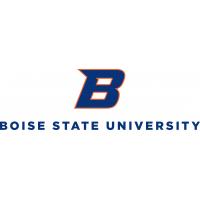Landscapes are rapidly changing. To understand these changes and how they may influence coexisting herbivores, it is critical that we improve the ways in which we monitor changes in plant species, populations, and functional phenotypic traits over space and time. Near infrared spectroscopy (NIRS) is proving to be a valuable tool when it comes to this goal. NIRS is noninvasive and can provide high-resolution temporal information, including structural and chemical characteristics, on objects that are otherwise expansive, inaccessible, or imperceptible. We used the threatened sagebrush-steppe ecosystem, which spans over 43 million hectares of the Western United States, as a case study to test the accuracy in which NIRS can measure and classify functional phenotypic traits of sagebrush (Artemisia spp.) populations. Sagebrush habitats are known to have extreme levels of genetic and chemical heterogeneity and plasticity. Yet, our results showed that NIRS can classify species of sagebrush within a site, populations of sagebrush within a species across sites, and phenology (both seasonally and annually) of sagebrush within a population. These taxonomic, geographic, and phenological phenotypes are functionally important in many ways, including determining species composition and distribution, identifying developmental stages of individual plants, potentially detecting past and present anthropogenic and environmental stressors, and predicting interactions with herbivores. Even so, habitat use by coexisting herbivores is not always explained by these relatively crude phenotypes. Specifically, herbivores make foraging decisions based on specific concentrations of chemical phenotypes that have functional consequences for herbivores. Our research further demonstrated that NIRS can predict concentrations of individual chemical compounds and classes of compounds, in the forms of both nutrients and toxins, in sagebrush plants across species and populations. As such, we further tested if NIRS could directly predict browsing by coexisting sagebrush herbivores, in the form of bite marks on plants. Although NIRS was not able to predict herbivore foraging behavior, it shows promise for predicting foraging behavior indirectly through predicted concentrations of phytochemicals and directly with finer tuned field validation and model calibration. To monitor the threats of climate and anthropogenic disturbances on ecosystems, it is essential we find better ways to quantify the functional phenotypes that mediate interactions among plants, herbivores, and the environment. We show that NIRS can be a powerful tool in achieving this aim.
Data and Resources
| Field | Value |
|---|---|
| Modified | 2022-07-07 |
| Release Date | 2022-07-07 |
| Publisher | |
| Identifier | 1a651fdf-a062-46c5-b9fd-970fa41104cc |
| Spatial / Geographical Coverage Area | POLYGON ((-114.5 42, -114.5 45, -113 45, -113 42)) |
| Spatial / Geographical Coverage Location | Idaho USA |
| Temporal Coverage | Tuesday, January 1, 2013 - 00:00 to Thursday, December 31, 2015 - 00:00 |
| Language | English (United States) |
| License | Adhere to third-party data sharing license |
| Author | |
| Contact Name | Jennifer Forbey |
| Contact Email | |
| Public Access Level | Public |
| DOI | 10.18122/td/1715/boisestate |

